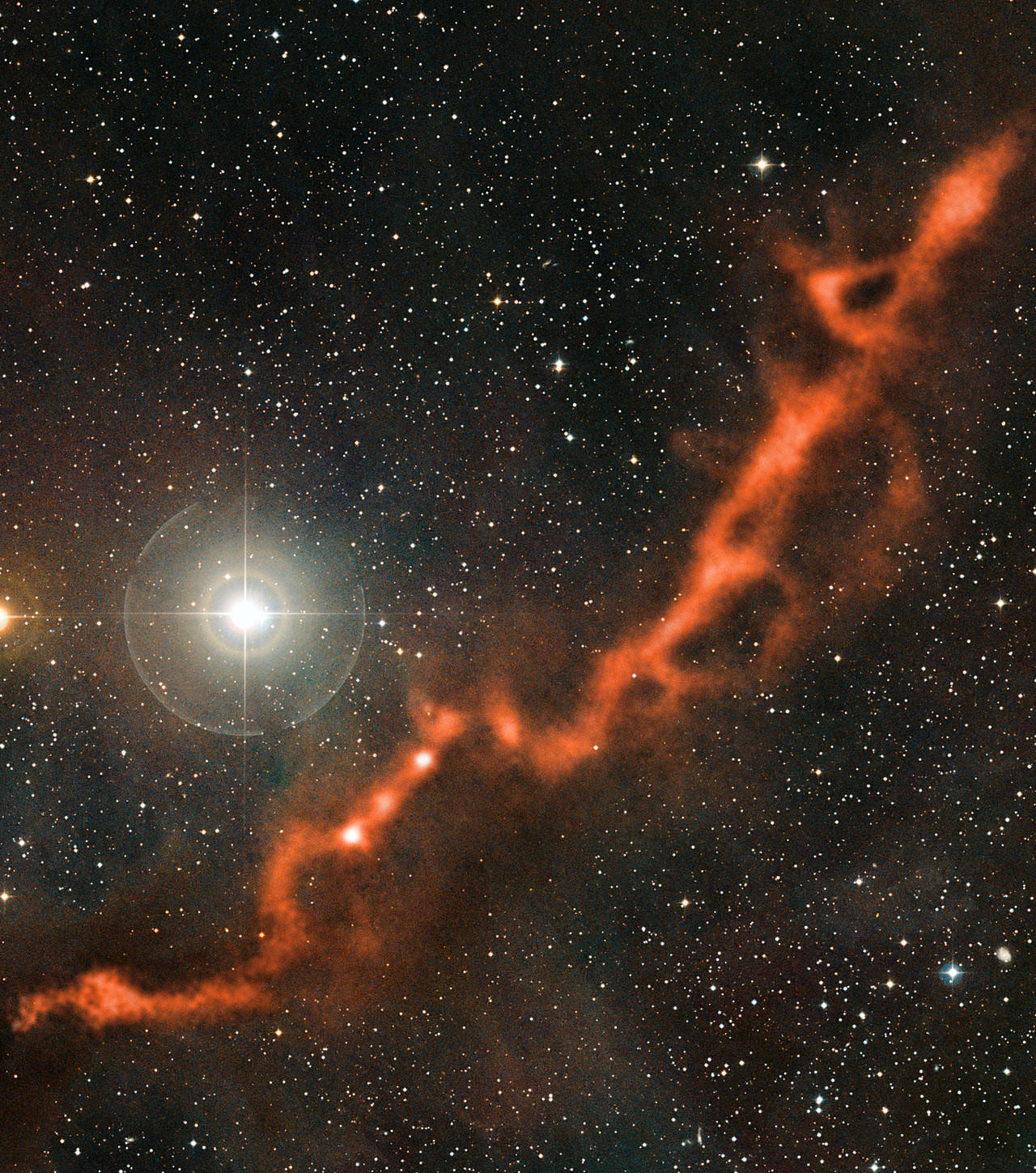[/caption]
This stunning new image shows a sinuous filament of cosmic dust more than ten light-years long. The makeup of filamentary cloud structures like this used to be a mystery, and in the early 20th century, Edward Emerson Barnard compiled a photographic atlas of these features, calling them "dark markings of the sky," as these regions appeared as dark lanes, with no stars visible. Barnard correctly argued that this appearance was due to "obscuring matter in space." Today we call segments in this particular cloud Barnard 211 and Barnard 213, or the Taurus Molecular Cloud. And we now know that these are clouds of interstellar gas and dust grains. But also, within these clouds, newborn stars are hidden, and dense clouds of gas are on the verge of collapsing to form yet more stars.
The Taurus Molecular Cloud is one of the closest regions of star formation to us. It is located in the constellation of Taurus about 450 light-years from Earth. The cosmic dust grains are so cold that observations at wavelengths of around one millimeter, such as these made with the LABOCA camera on APEX (Atacama Pathfinder Experiment) telescope in Chile, are needed to detect their faint glow.
This image shows two parts of a long filament. The dust grains — tiny particles similar to very fine soot and sand — absorb visible light, blocking our view of the rich star field behind the clouds. The Taurus Molecular Cloud is particularly dark at visible wavelengths, as it lacks the massive stars that illuminate the nebulae in other star-formation regions such as Orion.
But active star formation is taking place. This is why observations at longer wavelengths, such as the millimeter range, are essential for understanding the early stages of star formation.
Read more about this particular region at the
ESO website.
 Universe Today
Universe Today
